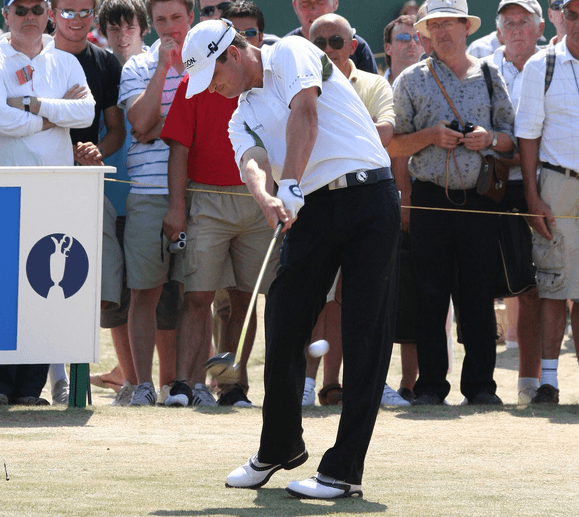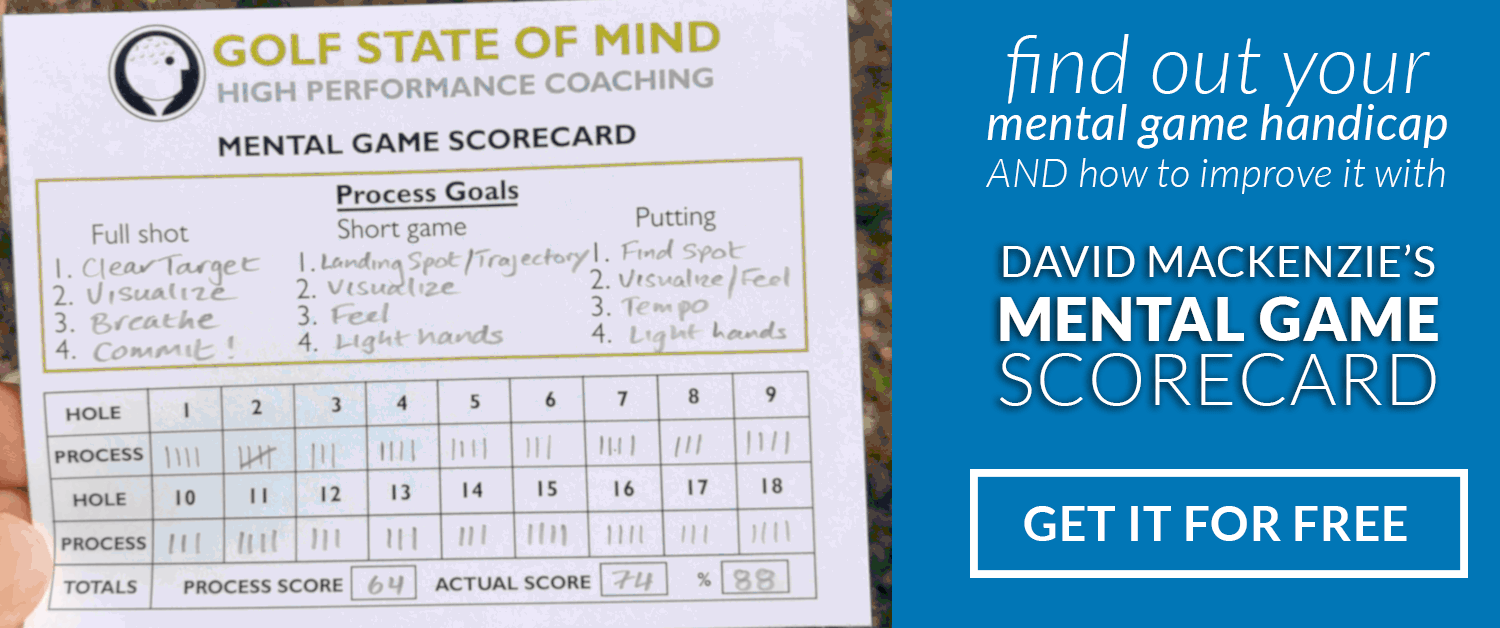
Do You Really Need a Swing Cue?
During the final round of the 1993 Kmart Greater Greensboro Open, I had the opportunity to follow Rocco Mediate play his way to his second PGA tour victory. Both he and his caddy could be heard whispering “slow-and-go” through the entire round. Rocco used this mantra-like expression to cue his best tempo and rhythm on each and every shot.
Possible swing cues
Not all swing cues are verbal. Mike Weir pre-sets his club in the proper take-away position to remind him to take the club back correctly. He visually confirms the pre-set club by looking at it before returning to his address position prior to initiating his swing. Most professionals and many amateurs use swing cues to overcome swing flaws that have plagued them in the past.
The problem with swing cues is that they usually cause unwanted, unconscious eye movement that interferes with swing mechanics, tempo, and rhythm, and solid ball striking, as well as being a sign of stress (concern for one’s performance). That’s why they don’t work 100% of the time. But used properly in combination with a pre-shot routine that includes stress relief technique(s) and the establishment of a Target Orientation, swing cues can be effective nearly all the time. Here’s how it’s done.
First, the swing cue is activated prior to starting your pre-shot routine. At this time you confirm your ability to make the proper move that overcomes poor swing habits that have plagued you in the past by using a drill that physically mimics the move you want to make ala Mike Weir or through the use of visualization/imagery techniques. Sport Scientists have found that visualization/imagery activates the same muscles as are used when an action is physically carried out.
Once confirmed, take a slow, deep breath, focusing completely on how you are breathing, both in the inhalation and exhalation stages. Proper Breathing eliminates up to 90% of all stress hormones that infect your performance. By focusing on your breathing itself, you stop thinking about your mechanics and can make the transition to a Target Orientation.
Begin your pre-shot routine behind the golf ball, selecting a distant target towards which you want your ball to leave the club face. Assume your address position and turn your head to make visual contact with your target. Jack Nicklaus did this twice before each swing, literally staring at his target each time. This created an indelible image in his mind’s eye that helped him remain target oriented throughout his swing. Return your eyes back to the ball and let them settle. Then return your attention (not your eyes) to your target. You must visually look at your target and return your attention to that target your eyes have resettled on the ball so that you don’t create a ball orientation that creates more problems than I have to describe here.
When you have established your Target Orientation you are ready to swing, free of swing thoughts that interfere with your swing and the effects of stress (caused by any concern about making mistakes that have infected your game in the past) that affect your ability to focus, swing and maintain “quiet eyes”.
Like your swing or other physical golf skill, you want your ability to use swing cues properly, relieve your body of stress, establish and maintain a Target Orientation to be completely automatic. The only way to accomplish this is through consistent practice. It can be accomplished on the range and in the privacy of your home or office through the use of mental rehearsal.
Photo by Steve Newton



Great article Tony,
No question, proper breathing and a good pre-shot routine is a valuable aid in performing a good golf swing.
Thanks for sharing